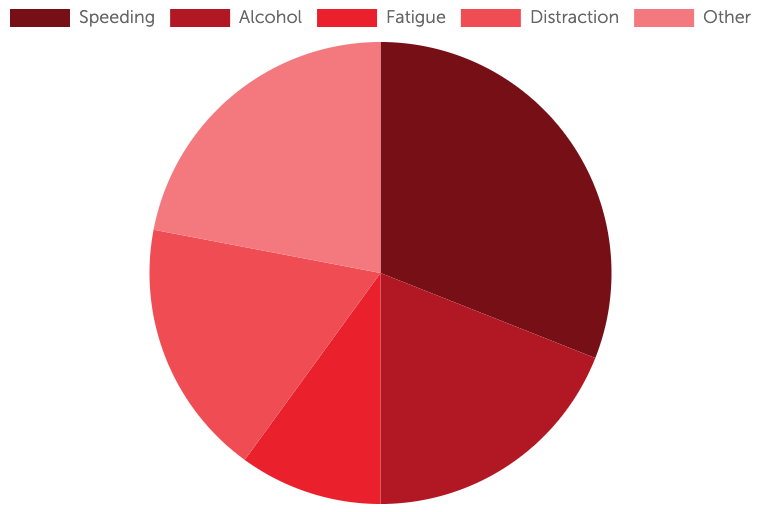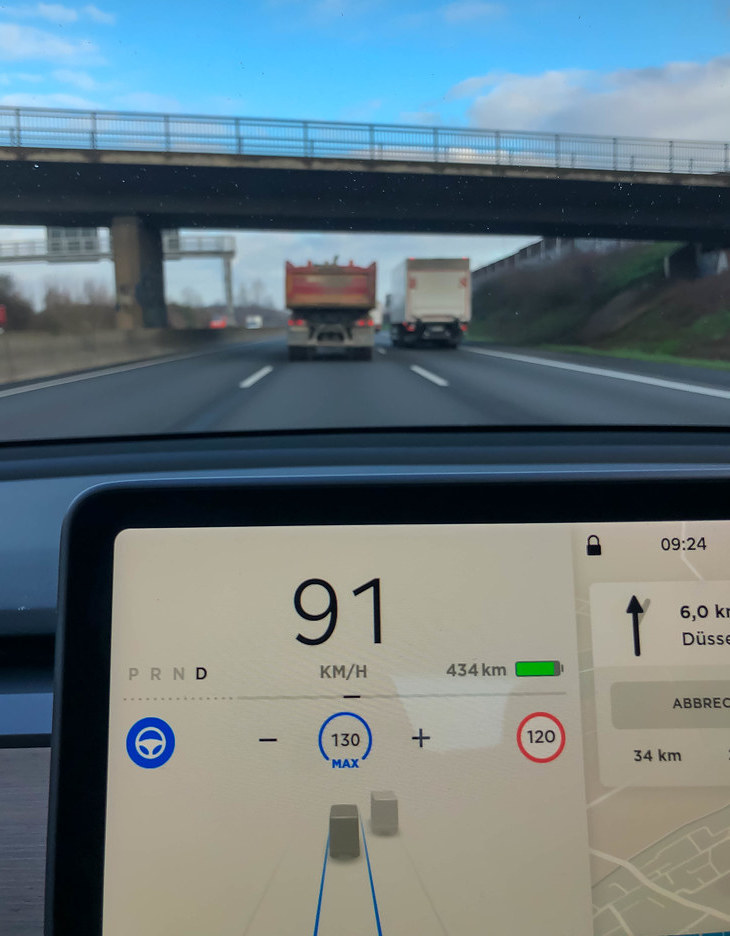If you’re in the market for a new EV, there’s a good chance that it can be optioned out with a gamut of autonomous tech features. But how much of this autonomous tech on offer today directly relates to the safety of you and your passengers? And will a fully-autonomous car ever be considered truly safe?
Autonomous vehicles are considered safer than human-operated cars for the vast majority of scenarios. With human error being the #1 contributor towards traffic accidents, autonomous vehicles and tech have the long-term potential to eliminate such accidents. However, with the semi-autonomous systems on offer today there are several important aspects that must be considered.
Let’s explore the topic in detail and see what the future of autonomous safety means, and where we stand today.
Autonomous Driving: The Next Step In Safety?
Eliminating driver error has been a pipe-dream since the dawn of the automobile. When it comes to road traffic collisions, human error is considered the number one contributor. In Australia, the top four causes of all road accidents are closely related to the human factor: namely speeding, drink-driving, fatigue and inattention.
The top four causes of fatal car accidents in Australia

Based on this, it would seem that introducing greater levels of autonomy to the cars on our roads would be a great opportunity to drive down accident figures. In fact, many hypothesise that the only way to reduce road-deaths to 0 is by incorporating some level of autonomy across the board. One such report that highlighted this was by the RAND Corporation. Their “Road to Zero” research report mapped a pathway towards zero deaths in the United States from road accidents — the backbone of it being the wide-spread adoption of autonomous cars.
Pathway to zero deaths

So it would stand to reason that greater adoption would result in greater safety. But when it comes to trusting autonomous vehicles, the majority still need some convincing.
Do We Trust Driverless Cars? — Why Public Opinion Is The Missing Link
Are you a nervous passenger? Do you sometimes stab at the phantom brake pedal when riding shotgun? If not ourselves, we all know someone who’s like that. But if relinquishing control to another human is bad enough, then the concept of subverting all driving decisions to an artificially intelligent “brain” may strike a disproportionate amount of fear into the hearts of many. It could even be the reason why you’re reading this article.
When a 49-year-old woman was struck down and killed by a Volvo XC-90 in 2018, it could have been yet another road-traffic statistic with minimal media coverage. Instead, it became a media frenzy. Why? Because the Volvo in question was operated by Uber — specifically it was one of their driverless test-mules. The incident prompted Uber to withdraw their driverless fleet from operation for nine months. But more significantly, it left a severe dent in the American public’s opinion.
A survey conducted by the American Automobile Association prior to the fatality showed that 63% of Americans were too scared to be passengers in an autonomous vehicle. After Uber’s driverless car fatality a similar survey was conducted. That figure rose to 71%.

Regaining Trust — The Role of The Stakeholders
With the deck stacked against them, it’s the role of car manufacturers and tech companies to drive change. This can be achieved both by introducing autonomous tech and by educating consumers about the benefits of self-driving cars.
In some cases, limited autonomy is already being widely promoted. Many vehicles sold in Australia today carry with them some form of “level one” autonomy. An example of level one autonomy is through the use of autonomous emergency braking (AEB). In fact, ANCAP actively encourages buyers to choose cars that incorporate AEB when making their next purchase decision.
Tech companies are also spreading the message that driverless cars are indeed safe. For the Waymo self-driving car (Google’s autonomous electric vehicle developer that has since been set up as a separate business under Alphabet) and their project, they actively engage in campaigns that extol the virtues of driverless tech.

Similarly, Tesla has repeatedly driven home the fact that Autopilot makes its vehicles safer. In one such instance, the company reported one accident for every four and a half million miles driven in a Tesla with Autopilot engaged. Overall, the national rate was one accident for every 479,000 miles (according to NHTSA, Q2 2020). That means that a Tesla with Autopilot engaged is 9.5x less likely to be involved in an accident than the US national average.
Are Today’s “Autonomous” Cars Safe?
Although we are some way off full “level five” autonomy, the transition towards it has already begun. Realistically though, it may be decades before driverless cars that require no human interaction are widely adopted on the roads of countries such as Australia or the US.
That’s not to say a degree of autonomous tech doesn’t exist today. Systems such as Volvo’s Pilot Assist or Audi’s Traffic Jam Assist (video below) are examples of level 2 autonomy — systems that require a driver to “rest” their hands on the wheel or apply a degree of torque every few seconds to confirm that someone is behind the wheel.
Meanwhile, Tesla continues to blur the lines between level two and level three autonomy (level three being where a car does not require hands-on intervention — provided conditions are ideal). With many other EVs looking to follow suit and with level three tech being incorporated into cars, the question of safety is bound to crop up.
The below video is a view of what Tesla’s Autopilot system sees and processes in real time. Looking like something out of a Terminator movie, the Autopilot system processes thousands of data points per second.
If you’re in the market for a new EV, you may be wondering whether such systems are safe, and whether or not it’s even worth stumping up the extra cash to take advantage of them.
Transcending Today’s Levels — The Human Touch

When discussing safety, it’s important to bear in mind a key factor behind the autonomous tech that can be bought today — unlike some trials that companies such as Waymo and Uber are carrying out, none of what is available on the market is beyond level three autonomy.
This essentially means the biggest safety device — the human driver — is still a critical part of the equation. Although some ill-informed users may be treating their cars as completely autonomous vehicles, it is of paramount importance that users maintain alertness at all times as they remain a vital part of the driving process.
In a 2016 accident, where a 40-year-old driver was killed while Tesla’s Autopilot was active, it was deemed that the driver had ignored several warnings to place his hands on the car’s steering wheel. Had he have done so, and likewise remained attentive, there’s every chance that the accident would have been avoided.
Similarly, car companies are beginning to understand that greater emphasis needs to be placed on keeping a driver attentive while utilising these semi-autonomous features. But, when optioned, such autonomous features can go a great way in preventing car crashes.
The NHTSA, for instance, points out that, although no truly “self-driving” vehicles exist on the marketplace today, that cars that incorporate self-driving technologies have the potential to eliminate human error from a wide range of situations on the road.
So while an EV on the market today with some level of autonomy does still require the driver to be an active part of the equation, it can be reasoned that such semi-autonomous tech does in fact make today’s cars safer on the road. The proviso though, at least until we reach level four autonomy, is that the parameters and boundaries of such tech should not be pushed beyond their parameters.
The road ahead
The future of autonomous cars and safety is one riddled with uncertainty — that’s not to say that driverless cars are unsafe, but that convincing the wider populous of their safety virtues may prove challenging. In addition, there are multiple legal hurdles to clear before truly autonomous cars can be sold to the public. While level-two automated cars are permitted, Australia (among other countries) requires laws to be reformed to allow for fully-autonomous vehicles to be considered legal.
But if we are to truly take a zero-fatality approach regarding road safety, there would seem little-to-no chance of that being achieved without the mass adoption of fully-autonomous cars.
The future of autonomous cars is a distinct possibility. And the sooner we adapt, the faster it will arrive — bringing with it safer roads for all.







